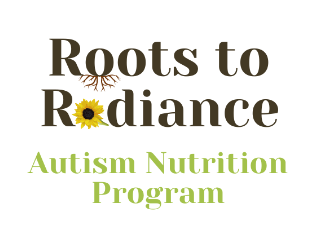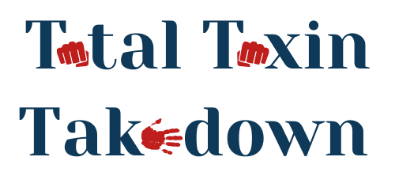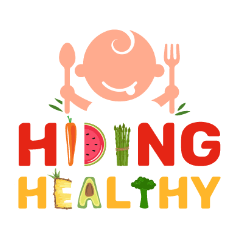Does your child struggle with constipation? Maybe your doctor recommended a daily dose of Miralax but you’re unsure or even worried about side effects and keeping your child on medication long term? You may be scared to take your child off Miralax and try something different for fear it won’t work.
If this sounds familiar, you are not alone and you’re in the right place for answers so keep reading!
In this guide, I will walk you through all the alternatives to Miralax that I turn to as a Registered Dietitian, when I’m helping clients overcome constipation.
What is constipation?
Constipation is when a person has infrequent bowel movements or bowel movements that are difficult to pass. [1] Constipation is the most common GI symptom among those with autism.
People with constipation:
- Have fewer than 3 bowel movements per week
- In my professional opinion, if we are eating 3 times a day, we should be pooping at least once a day
- Strain to pass stool
- Have hard, dry, lumpy or pebble-like stools
- Feel like their bowel movement was incomplete
Other signs of constipation:
- Lack of appetite
- Abdominal pain or bloating, a belly that is distended or “pregnant-looking”
- Bed wetting – children with constipation may wet the bed or have “accidents” due to compression of the bladder by stool in the rectum. This could look like a regression in potty training as well but may in fact be due to the build up of stool pushing on the bladder or rectum.
- Encopresis – children may also have fecal incontinence, also known as encopresis. This is when constipation stretches the bowels, allowing watery stool from higher in the intestines to seep through and leak out.
- Children may put their belly against furniture like the edge of a couch to put pressure on the belly in an attempt to relieve discomfort.
- Holding it in – children that are trying to hold in poop may walk or stand on their toes, cross or squeeze their legs together, or clench their jaw. [3]
- Worsening behaviors
- Research tells us that autism behaviors like irritability, aggression, self injury, and anxiety get worse as gastrointestinal symptoms get worse. [4]
What causes constipation?
-
Food sensitivities
- These are different than food allergies (more on this below)
-
Holding in poop
- Children may hold poop in because they are engrossed in play and don’t want to use the toilet or because they’ve had a painful bowel movement in the past.
- When you hold in poop, the colon absorbs water from the stool, which makes the poop harder and more difficult to pass. Holding it in also causes the stool to bunch up and this stretches out the colon. A stretched out colon makes it difficult to feel the urge to poop.
- Having a toilet routine helps encourage regular and consistent elimination.
-
Not enough fluid or fiber
-
Pelvic floor dysfunction
- Low muscle tone (hypotonia or weakness) or hypertonia (high muscle tone or tensing of the pelvic floor muscles)
-
Dysbiosis
- Imbalance of good and bad bacteria in the gut
-
Yeast/candida overgrowth or other pathogenic infections
-
Medications
- like those for seizures, allergy medications, antipsychotics and even laxatives if used for a while and then suddenly stopped
-
Supplements
- iron, calcium and activated charcoal
-
Not enough movement/exercise
-
Picky eating
- Constipation can cause lack of appetite and belly pain/bloating, which can exacerbate picky eating! And picky eating can lead to a diet that is low in fiber, fluid and micronutrients, which lead to constipation! It’s a vicious cycle. Alleviating constipation can improve picky eating!
Why is it important to resolve constipation?
Aside from the typical misery that constipation causes, there are lots of reasons I recommend resolving constipation as soon as possible.
- There are toxins and waste products in stool that should be regularly eliminated from the body so they are not reabsorbed.
- Passing hard stool or straining can cause painful fissures or hemorrhoids. Fear of the pain can cause children to hold in their poop, which makes constipation worse.
- You really want to avoid fecal impaction, which is when stool gets so hardened and bulked up that it cannot be passed. This requires medical attention.
Why I don’t recommend Miralax
Reason #1
On the label, the manufacturer states that Miralax shouldn’t be used for more than 7 days. Most people are using it for weeks, months or even years.
Reason #2
There are lawsuits against Miralax and claims of people experiencing neuropsychiatric effects like seizures, tremors, tics, anxiety, lethargy, aggression, paranoia, mood swings, and obsessive–compulsive behaviors [2]
Reason #3
My biggest reason is this. Constipation is a symptom. It’s our body giving us a clue that something isn’t right.
I like to figure out why constipation is happening in the first place so we can fix it for good.
Miralax is a short term solution that alleviates the constipation symptom. My goal is to relieve the symptom with safer methods AND resolve the underlying cause so constipation is no longer an issue!
In my practice, I work with you to identify the root cause of constipation by using two tests, a stool test and a food sensitivity test. These allow me to have a look at what is going on inside the gut so we can resolve the issue for good.
For one on one help with constipation, contact me – I’d love to chat about how I can help.
Alternatives to Miralax
Soften stools with the 3 “Fs”
These strategies are appropriate for toddlers through adults (age 1+)
-
Increase Fluids
- We should be getting half our body weight in ounces per day. So if your child is 40 lbs, they should be getting about 20 ounces of water per day).
-
Increase Fiber
- I prefer doing this with whole foods like veggies, fruits, nuts and seeds but if you have a picky eater, using a fiber supplement might be better for you.
- Always remember that if you increase fiber in the diet, you MUST increase fluid as well. Fiber is like a sponge in the gut. Without water it’s stiff and stuck. But with enough water, it softens and moves through easily.
- These are some fiber supplements I recommend.
-
Increase Physical Movement
- Move more! Swim lessons, parks, trampolines. Just get your little one moving and the bowels will move more too.
Foods for Constipation Relief
Appropriate for toddlers through adults (age 1+)
- Prunes or prune juice
- Pear juice or pear nectar
- Flax seeds, especially ground flax or flax oil (refrigerate these)
- Chia seeds or hemp seeds
- Coconut water
- Coconut oil
- Mint or ginger tea
Sometimes these few changes can be enough to get a child pooping more regularly. But if not, you can always try supplements.
Supplements for Constipation Relief
You will not need all of these supplements, but I wanted to provide a comprehensive list so you could see all of the options. There are a lot of supplements that can alleviate constipation and I’m happy to help you figure out which is best for your child. Dosing depends on your child’s age and weight.
Reach out if you’d like to work together on this!
-
Magnesium citrate:
- You can find these as liquid, powder, capsules or gummies
- I like to start with magnesium citrate and then switch to magnesium glycinate once the child is pooping regularly. Glycinate is great for sleep and anxiety too.
- CALM magnesium is a good brand too, and they have a powder and gummy form.
- Suitable for children and adults.
-
Aloe Juice
- Be sure to use the inner filet only. Avoid “whole leaf” formulas which contain the latex of the plant.
- I like Lily of the Desert for juice and Protocol for Life Balance for a softgel capsule.
- Can be used with children and adults.
-
Vitamin C
- Did you know that vitamin C can loosen stool? It’s true.
- I like to use a powdered form by Pure Encapsulations so it’s easier to increase the dose slowly. The buffered form is also more gentle on the digestive system.
- Suitable for children and adults.
-
Triphala
- This supplement is a combination of 3 herbs and is a very gentle laxative.
- I like Ayush Herbs for children.
- For adults, Gaia Herbs, Organic India and Nature’s Way are my go-to brands.
-
MCT oil
- Protocol for Life Balance, Jarrow Formulas and Now Sports are my favorites.
- Suitable for kids and adults.
-
Probiotics
- Imbalance of bacteria in the gut, as a result of recurrent antibiotic use, gastrointestinal infections, a diet high in processed foods, can lead to constipation.
- Probiotics can help to right this bacterial imbalance. My two favorite brands are Biogaia and Visbiome. Both of these brands have product lines for babies/toddlers, kids and adults.
-
Digestive enzymes
- Needed for proper breakdown of nutrients from our food. Digestive enzymes may be useful if stools float, which typically indicates fat in the stool, or if there is a lot of undigested food in the stool.
- For children, I like to use Enzymedica, Klaire Labs, and Pure Encapsulations.
- Adults may benefit from a stronger formula like this option from Pure Encapsulations. Digestive enzymes along with apple cider vinegar can also help with acid reflux.
-
Minerals
- Chronic stress and poor diet can deplete adequate mineral levels in our body. Mineral imbalances can affect the thyroid which can lead to constipation.
- Omniblue magnesium is a good brand and they even provide recommendations for dosing.
- Mary Ruth has a nice nighttime mineral supplement as well.
- Note: it can be difficult to identify mineral imbalances. I like to use micronutrient testing with my clients to make sure we are supplementing minerals strategically based on what each child needs.
- Can be used for children and adults.
-
Carnitine
- Carnitine is particularly useful for people with hypotonia or low tone. I prefer Seeking Health and Now Foods.
- Suitable for children and adults.
- Carnitine is particularly useful for people with hypotonia or low tone. I prefer Seeking Health and Now Foods.
-
Ready Set Go by Orthomolecular
- This is a blend of natural fruit and plant extracts. A really nice option for kids.
-
NDF pooper by Bioray
- This herbal formula is dual purpose, alleviating constipation and gently detoxifying heavy metals.
- Suitable for children.
-
GI Fortify by Pure Encapsulations
Stool Softener Supplements for babies (6 months old+)
-
Wellements Organic Constipation Support
-
Mommy’s Bliss Constipation Ease
Other ways to relieve constipation for kids and adults

Get in “poop position” before going to the toilet
- Similar to a yoga child’s pose, rest on your forearms and knees, with your butt in the air. Sort of like this picture, but no need to push your face into the sofa.
- Poop position stimulates gas and stool to move through the bowels.
-
Use a squatty potty while on the toilet
- The squatty potty toilet stool puts the body in a position that is ideal for pooping! I recommend this to everyone! Trust me, you’ll wonder how you ever got along without it.
-
Essential oils
- There is research to suggest that some essential oils can be beneficial in helping alleviate constipation, either through aromatherapy or through the use of the oils with abdominal massage.[6]
- When using essential oils with children, they typically need to be diluted by adding them to a carrier oil or lotion. Check out this guide for safe use of essential oils.
- Essential oil brands I trust include Mountain Rose Herbs, doTERRA and Aromatics International.
-
Epsom salt baths
- Epsom salts are magnesium sulfate and this form of magnesium is absorbed through the skin and helps move our bowels. Epsom salts are also excellent for promoting relaxation and I often recommend them before bedtime.
- I keep a big bag of Epsom salts in the house, for whenever I may need it.
- Dissolve ½ cup of epsom salts in a bath for children under 60 lbs and 1 cup for those over 60 lbs.
- Be careful that your child doesn’t drink water with epsom salt in it, as it can cause cramping and diarrhea.
-
Chiropractic
- Find a good pediatric chiropractor. There is some research that suggests chiropractic may be beneficial for those with constipation, especially in babies.[5]
-
Abdominal massage
- There is research to support the effectiveness of massage for relieving constipation. [3,4]
- Often called the I Love You or I L U abdominal massage for constipation.
- You may want to seek out a physiotherapist to help with this.
- I found these videos really useful too, which demonstrate abdominal massage on babies/children and adults.
-
Eliminate food sensitivities
- Food sensitivities can wreak havoc on the gut, causing inflammation and constipation. Identifying food sensitivities is one of the best ways to address the root causes of constipation and fix it for good.
- Food allergies and food sensitivities are very different and different tests are needed to identify each. Skin prick tests done by an allergist will not tell you about food sensitivities.
- I use the LEAP MRT protocol in my practice. This test tells us which foods a person is most sensitive to. I help my clients remove these foods for a short time, allowing their gut to heal.
How do I transition off Miralax?
Work with me
The best way I can help you with this is to work with you directly! That way we can figure out which alternative to Miralax is best for your child and we can fine tune our strategy so that weaning off Miralax isn’t so scary!
My approach also includes:
- Increasing fiber and fluid in the diet, especially for picky eaters – it can be done!
- Identify and remove any foods that are causing inflammation
- Use supplements to support comfortable and regular bowel movements
- Look into the underlying causes of constipation so we can fix it for good!
And BONUS! Clients that work with me get access to nearly all of the supplements above at a 15% discount through my supplement dispensary, Fullscript.
DIY
But if you’re a do-it-yourself kind of person, I recommend slowly decreasing the amount of Miralax you give your child and slowly increasing the amount of fiber, fluid, and magnesium (or other supplement) at the same time. You can even decrease the dose of Miralax (by ½ tsp) every other day or every third day to start.
Wrap-up
We covered a lot of ground today. We reviewed all things constipation; the causes, the dangers of it, why I don’t recommend Miralax and plenty of alternatives that will get the bowels moving. I hope you found this incredibly useful!
Would it be helpful to have this article sent as a pdf to your inbox? No problem! Get a copy, so you always have easy access to it!



